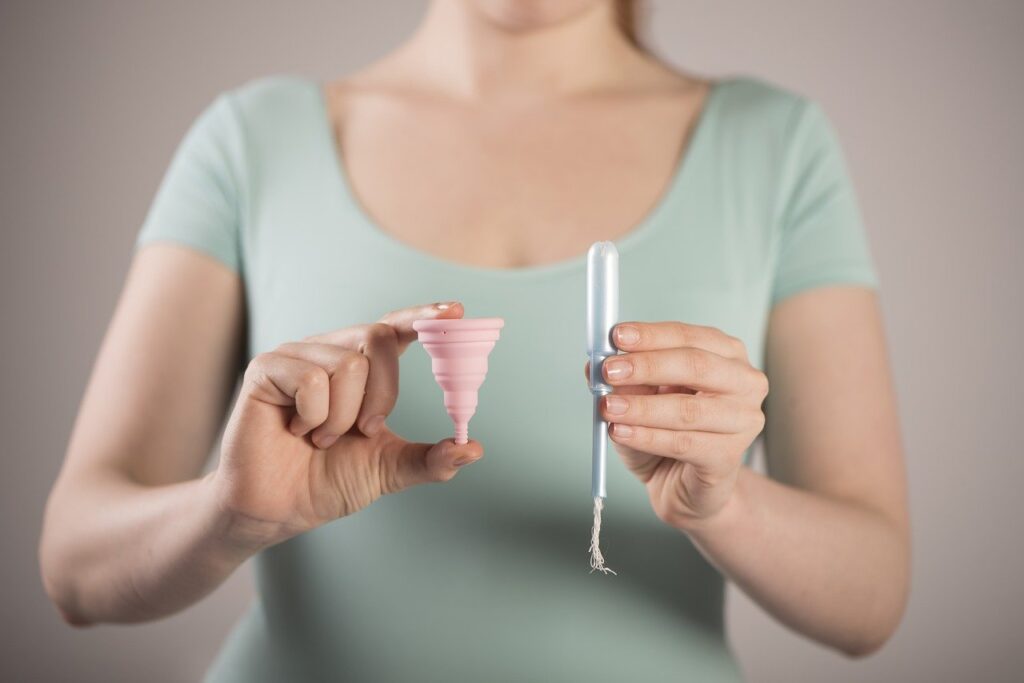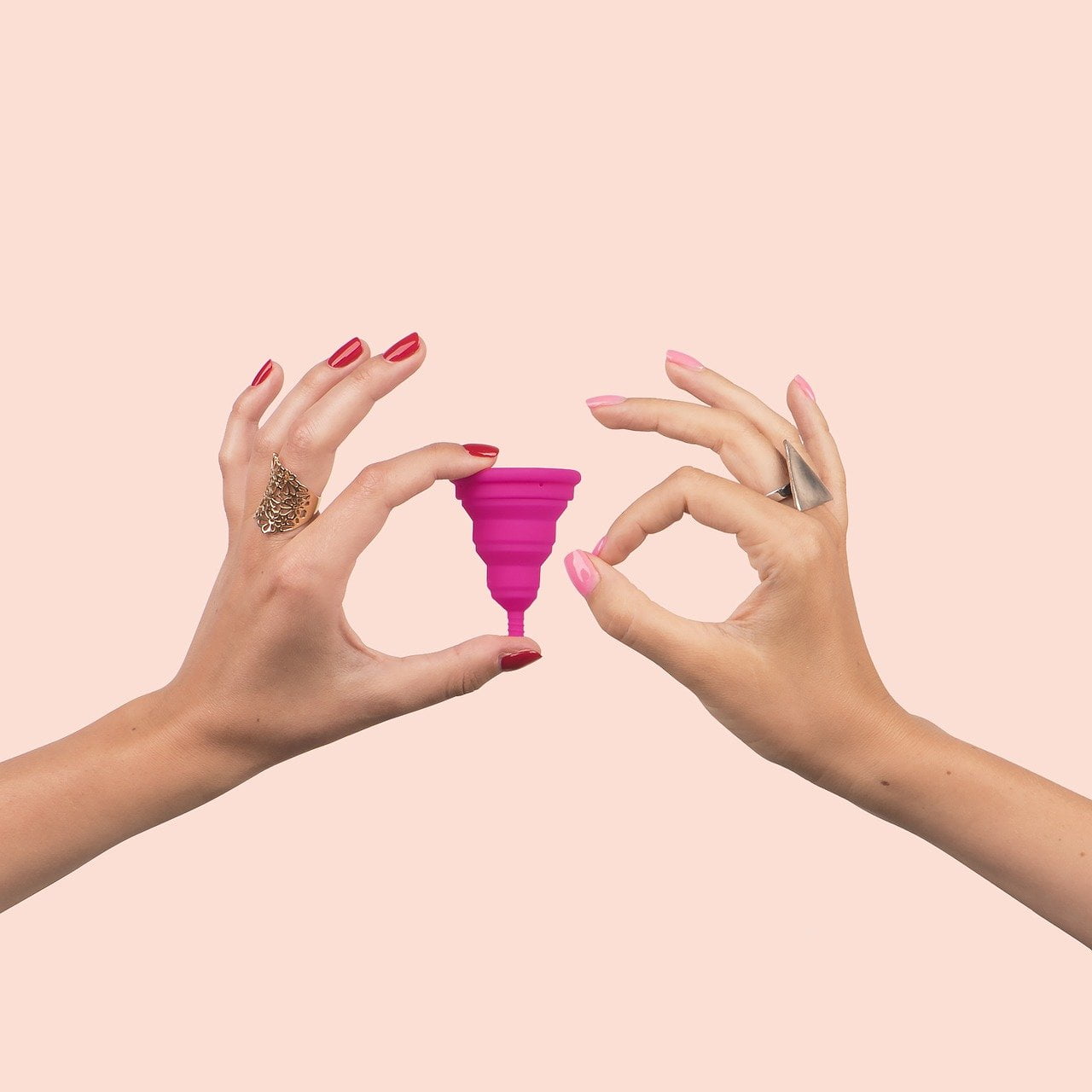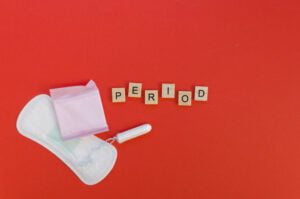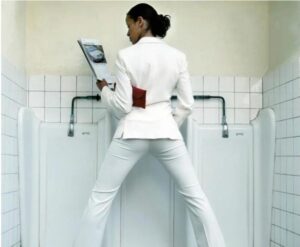One of the reasons Menstrual cup has grown in popularity is the fear of leaking menstrual fluid in public. Many ladies prefer them to traditional tampons and sanitary pads since they don’t leak.
What exactly is a Menstrual Cup and when was it made?
Menstrual cups are silicone or rubber bell-shaped cups. When you fold one and place it in your vagina, it snaps open and seals against the vaginal walls. The menstrual fluid is trapped in the cup until it is removed to be emptied.
Since at least the 1860s, menstrual cups have been used. They weren’t commercialised until the 1930s, when American actress and singer Leona Chalmers promoted her innovative catamenial receptor, which is today known as a menstruation cup. These cups were not widely used due to worries about inserting them and the pain of the early rubber variants. Menstrual cups have recently grown more popular, thanks to improvements in design and the use of soft silicone.

Is a Menstrual cup a better alternative to a Tampon?
One of the most significant questions is which period product to utilize. And, believe it or not, a large number of doctors and medical researchers have given them significant thought. After all, why shouldn’t they? Given that the average woman uses 10,000 sanitary items in her lifetime, it’s only reasonable that such topics be prioritized.
If you’re on the fence about switching from your favorite tampon to a menstrual cup, let me briefly outline some of the benefits of doing so. Menstrual cups are one of my favorite sanitary devices because they are hygienic, reusable, and made of soft, medical-grade silicone.
- Menstrual cups, unlike tampons, do not dry up the vaginal area. This protects you from vaginal infections by preserving the healthy bacteria.
- Toxic shock syndrome (TSS), a rare, life-threatening illness connected to tampon use, is not linked to menstrual cups.
- When menstrual fluid is exposed to air, it acquires an odor. This problem is solved by using cups.
- Chemicals common in tampons and pads, such as bleach and dioxin, are not present in menstrual cups. Some dioxins are known to cause cancer in humans, as per the World Health Organization (WHO).
- Comfort is provided by menstruation cups. No, I’m serious. I’ve gone running, climbing, and trekking while using a menstrual cup, and I’ve never had a leak. My body has become accustomed to it.
- When the cup is in place, most women say they don’t even notice it’s there.
- Menstrual cups that can be reused are better for the environment. According to the Women’s Environmental Network, about 400 million pounds of sanitary pads, tampons, and tampon applicators wind up in landfills each year.
How to use Menstrual Cup
- Please wash your hands.
To begin, wash your hands with water and a mild, unscented soap, just like you would before inserting a tampon without an applicator. To make insertion easier, moisten the cup with water or a water-based lubricant before using it for the first time.
- Make your cup as flat as possible.
To prepare for the fold, flatten your menstrual cup between your thumb and other fingers as shown (step 3).
- Fold your cup in half.
Fold the menstrual cup in half with your other hand once it’s flattened, so the rim forms a “C.” Hold the cup firmly in the hand with which you are most at ease. As shown, the folded portion should face the inside of your hand. You can fold your cup in a variety of ways. Prepare for step 4 by holding the cup firmly in its folded configuration.
- Make sure you’re ready to insert
With your free hand, gently split your labia while spreading your legs. As shown, begin by guiding the folded cup rim toward your vagina with the rounded end of the “U” form facing you. The cup can be inserted while sitting, standing, or crouching; spreading your legs will make it easier to do so.
- Place the cup inside.
The menstrual cup will begin to unfold inside the vagina once the rim has been inserted. If you turn it sideways, it will spring open and establish an airtight seal, which will halt leaks. All you have to do is gently push it in with your finger until the entire cup, including the stem, is inside. It shouldn’t be too high; your cup’s bottom should be approximately a half-finger away from the entry. The cup, unlike a tampon, is placed in the bottom part of the vaginal canal but beyond the pelvic bone.
- Turn your cup around.
Pinch the base of the cup (not the stem) lightly and turn it one full rotation in either direction. By doing so, you can avoid leaks by ensuring that the cup has fully expanded. When correctly opened, the cup should rotate readily. You can double-check if it’s fully open by sliding a finger up next to the cup and touching all the way around it, though this is typically unnecessary.



